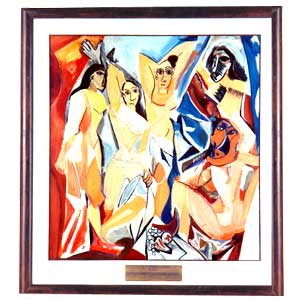
Although economists as a whole are a pretty imperialistic bunch, the economic analysis of the art world has been a rather undeveloped field of inquiry. One notable exception is Northwestern’s David Galenson, who has published widely on the topic, and even developed a ranking system for the greatest art work based on “visual citations” (number 1 is Picasso’s “Les Demoiselles d’Avignon.”)
Some of Galenson’s recent work examines how artists have earned a living over time and how that has shaped both the nature and creativity of their work. The New York Times piece cited above summarizes this argument:
To Mr. Galenson markets are what make the 20th century completely different from other eras for art. In earlier periods artists created works for rich patrons generally in the court or the church, which functioned as a monopoly. Only in the 20th century did art enter the marketplace and become a commodity, like a stick of butter or an Hermès bag. In this system, he said, breaking the rules became the most valued attribute. The greatest rewards went to conceptual innovators who frequently changed styles and invented genres. For the first time the idea behind the work of art became more important than the physical object itself.
It’s an interesting topic, especially for those interested in innovation and the arts. You might consider checking out Galenson’s book, Conceptual Revolutions in Twentieth-Century Art (available at The Mudd), for a fuller explication. You can read a summation of his argument over at my favorite clearinghouse, VoxEu, or yesterday’s piece in The American.
This might be a good I&E Reading Group selection or a building block for an independent study.